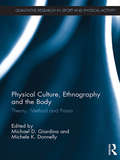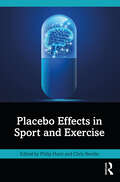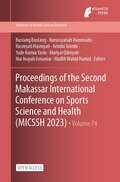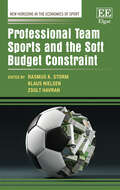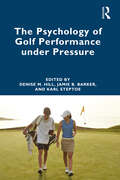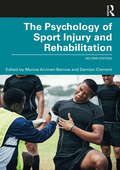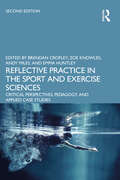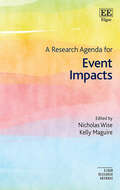- Table View
- List View
Paralympic rowing (Large Print)
On this page there are two images of a paralympic athlete in an adaptive boat race: the top image shows the rower and boat seen from the front and in the bottom image she is seen from the side. The singles races are open to rowers with only arm and shoulder movement. The boat has a fixed seat and stabilising pontoons attached to the riggers. The seat in the boat has a high back and the rower is strapped in around their torso and legs. For clarity, the seat and the straps have not been shown. Each image has a dashed line image border. There is a locator dot shown, which will be at the top left of the page when the image is the correct way up. >Rower and boat seen from the front (top) - The boat and rower are seen from the front with the rower's head in the top centre of the image. Down from her head are her shoulders, with her arms at the left and right, bent at the elbows going down to her hands holding the ends of the two oars. The oars stretch across the page to the left and right. The rower's body is between her arms. She is seated in the boat, which has stabilising outriggers extending to the left and right. The boat is floating on the wavy surface of the water at the bottom of the image.Rower and boat seen from the side (bottom) - Here, the boat and rower are seen from the side. In the centre of the image, the rower's head is in profile facing left. Only one of her eyes and arms can be found. From her head, her arm goes down diagonally to the left. She is holding the end of an oar, which extends right towards the stern (back) of the boat. Her body is to the right of her arm. Down the page from her arm is a rowlock, which supports the oar, and a stabilising pontoon. The front (bow) of the boat is on the left of the page. The boat is floating on the wavy surface of the water at the bottom of the image.
Paralympic rowing (UEB Contracted)
On this page there are two images of a paralympic athlete in an adaptive boat race: the top image shows the rower and boat seen from the front and in the bottom image she is seen from the side. The singles races are open to rowers with only arm and shoulder movement. The boat has a fixed seat and stabilising pontoons attached to the riggers. The seat in the boat has a high back and the rower is strapped in around their torso and legs. For clarity, the seat and the straps have not been shown. Each image has a dashed line image border. There is a locator dot shown, which will be at the top left of the page when the image is the correct way up. >Rower and boat seen from the front (top) - The boat and rower are seen from the front with the rower's head in the top centre of the image. Down from her head are her shoulders, with her arms at the left and right, bent at the elbows going down to her hands holding the ends of the two oars. The oars stretch across the page to the left and right. The rower's body is between her arms. She is seated in the boat, which has stabilising outriggers extending to the left and right. The boat is floating on the wavy surface of the water at the bottom of the image.Rower and boat seen from the side (bottom) - Here, the boat and rower are seen from the side. In the centre of the image, the rower's head is in profile facing left. Only one of her eyes and arms can be found. From her head, her arm goes down diagonally to the left. She is holding the end of an oar, which extends right towards the stern (back) of the boat. Her body is to the right of her arm. Down the page from her arm is a rowlock, which supports the oar, and a stabilising pontoon. The front (bow) of the boat is on the left of the page. The boat is floating on the wavy surface of the water at the bottom of the image.
Paralympic rowing (UEB Uncontracted)
On this page there are two images of a paralympic athlete in an adaptive boat race: the top image shows the rower and boat seen from the front and in the bottom image she is seen from the side. The singles races are open to rowers with only arm and shoulder movement. The boat has a fixed seat and stabilising pontoons attached to the riggers. The seat in the boat has a high back and the rower is strapped in around their torso and legs. For clarity, the seat and the straps have not been shown. Each image has a dashed line image border. There is a locator dot shown, which will be at the top left of the page when the image is the correct way up. >Rower and boat seen from the front (top) - The boat and rower are seen from the front with the rower's head in the top centre of the image. Down from her head are her shoulders, with her arms at the left and right, bent at the elbows going down to her hands holding the ends of the two oars. The oars stretch across the page to the left and right. The rower's body is between her arms. She is seated in the boat, which has stabilising outriggers extending to the left and right. The boat is floating on the wavy surface of the water at the bottom of the image.Rower and boat seen from the side (bottom) - Here, the boat and rower are seen from the side. In the centre of the image, the rower's head is in profile facing left. Only one of her eyes and arms can be found. From her head, her arm goes down diagonally to the left. She is holding the end of an oar, which extends right towards the stern (back) of the boat. Her body is to the right of her arm. Down the page from her arm is a rowlock, which supports the oar, and a stabilising pontoon. The front (bow) of the boat is on the left of the page. The boat is floating on the wavy surface of the water at the bottom of the image.
Paralympic shooting (Large Print)
There are three images on this page: a competition air rifle, a competitor taking aim with an air rifle and a competitor taking aim with an air pistol. Each image has a dashed line image border. There is a locator dot shown, which will be at the top left of the page when the image is the correct way up. A competition air rifle - This image stretches across the top of the page. It shows a competition air rifle seen from the side and pointing to the right. On the bottom left of the image is the rifle's stock. This is the part of the gun that rests on a user's shoulder. On this model, the stock is made up of many parts that can be adjusted to suit the individual's body shape. To the right of the stock is the gun's handgrip and right again the small lever that is the trigger. Up the page from the handgrip and the trigger is the rear sight. This is a device to help accurately aim the gun at a target. To the right of this is the barrel of the gun and down the page is the reservoir that contains the gas used to propel the pellet down the barrel to the right. At the far right of the image are the front sight and the muzzle of the gun, where the pellet leaves the gun when it is fired.Competitor taking aim with an air rifle - This image is on the bottom left of the page. It shows a competitor taking aim at a target beyond the image border to the right. He is seen from the side and facing to the right. His head is in the left centre of the image facing to the right so only one eye can be found. Part of his face is obscured by the stock of his rifle. His visible eye is looking through the sight of the gun slightly to the right. Down the page from his head, one of his hands can be found, with a finger on the gun's trigger ready to fire. Further down is his elbow and part of the wheelchair he is sitting in. Up and to the right you can find his other arm, with his hand holding the gun's barrel. Further right is the muzzle of the gun. Competitor taking aim with an air pistol - This image is on the bottom right of the page. It shows a competitor sitting on a stool and taking aim with an air pistol at a target beyond the image border to the left. He has both legs amputated at the upper thigh. The competitor's head is in the top right of the image, facing to the left so that only one of his eyes can be found. He is wearing ear protectors. One of his arms extends horizontally to the left, with his hand holding the gun, aimed to the left. Down from his head is the competitor's chest with his other arm to right leading down the page to his hand, which is resting on his lap. Further down the page is the seat of the stool. The legs of the stool cannot be found as they are past the image border.
Paralympic shooting (UEB Contracted)
There are three images on this page: a competition air rifle, a competitor taking aim with an air rifle and a competitor taking aim with an air pistol. Each image has a dashed line image border. There is a locator dot shown, which will be at the top left of the page when the image is the correct way up. A competition air rifle - This image stretches across the top of the page. It shows a competition air rifle seen from the side and pointing to the right. On the bottom left of the image is the rifle's stock. This is the part of the gun that rests on a user's shoulder. On this model, the stock is made up of many parts that can be adjusted to suit the individual's body shape. To the right of the stock is the gun's handgrip and right again the small lever that is the trigger. Up the page from the handgrip and the trigger is the rear sight. This is a device to help accurately aim the gun at a target. To the right of this is the barrel of the gun and down the page is the reservoir that contains the gas used to propel the pellet down the barrel to the right. At the far right of the image are the front sight and the muzzle of the gun, where the pellet leaves the gun when it is fired.Competitor taking aim with an air rifle - This image is on the bottom left of the page. It shows a competitor taking aim at a target beyond the image border to the right. He is seen from the side and facing to the right. His head is in the left centre of the image facing to the right so only one eye can be found. Part of his face is obscured by the stock of his rifle. His visible eye is looking through the sight of the gun slightly to the right. Down the page from his head, one of his hands can be found, with a finger on the gun's trigger ready to fire. Further down is his elbow and part of the wheelchair he is sitting in. Up and to the right you can find his other arm, with his hand holding the gun's barrel. Further right is the muzzle of the gun. Competitor taking aim with an air pistol - This image is on the bottom right of the page. It shows a competitor sitting on a stool and taking aim with an air pistol at a target beyond the image border to the left. He has both legs amputated at the upper thigh. The competitor's head is in the top right of the image, facing to the left so that only one of his eyes can be found. He is wearing ear protectors. One of his arms extends horizontally to the left, with his hand holding the gun, aimed to the left. Down from his head is the competitor's chest with his other arm to right leading down the page to his hand, which is resting on his lap. Further down the page is the seat of the stool. The legs of the stool cannot be found as they are past the image border.
Paralympic shooting (UEB Uncontracted)
There are three images on this page: a competition air rifle, a competitor taking aim with an air rifle and a competitor taking aim with an air pistol. Each image has a dashed line image border. There is a locator dot shown, which will be at the top left of the page when the image is the correct way up. A competition air rifle - This image stretches across the top of the page. It shows a competition air rifle seen from the side and pointing to the right. On the bottom left of the image is the rifle's stock. This is the part of the gun that rests on a user's shoulder. On this model, the stock is made up of many parts that can be adjusted to suit the individual's body shape. To the right of the stock is the gun's handgrip and right again the small lever that is the trigger. Up the page from the handgrip and the trigger is the rear sight. This is a device to help accurately aim the gun at a target. To the right of this is the barrel of the gun and down the page is the reservoir that contains the gas used to propel the pellet down the barrel to the right. At the far right of the image are the front sight and the muzzle of the gun, where the pellet leaves the gun when it is fired.Competitor taking aim with an air rifle - This image is on the bottom left of the page. It shows a competitor taking aim at a target beyond the image border to the right. He is seen from the side and facing to the right. His head is in the left centre of the image facing to the right so only one eye can be found. Part of his face is obscured by the stock of his rifle. His visible eye is looking through the sight of the gun slightly to the right. Down the page from his head, one of his hands can be found, with a finger on the gun's trigger ready to fire. Further down is his elbow and part of the wheelchair he is sitting in. Up and to the right you can find his other arm, with his hand holding the gun's barrel. Further right is the muzzle of the gun. Competitor taking aim with an air pistol - This image is on the bottom right of the page. It shows a competitor sitting on a stool and taking aim with an air pistol at a target beyond the image border to the left. He has both legs amputated at the upper thigh. The competitor's head is in the top right of the image, facing to the left so that only one of his eyes can be found. He is wearing ear protectors. One of his arms extends horizontally to the left, with his hand holding the gun, aimed to the left. Down from his head is the competitor's chest with his other arm to right leading down the page to his hand, which is resting on his lap. Further down the page is the seat of the stool. The legs of the stool cannot be found as they are past the image border.
Paralympic sitting volleyball (Large Print)
This page has three images on it: a player sitting and serving the ball, a player about to return the ball, and a diagram showing the layout of a volleyball court. Members of the team have mixed disabilities. Players must keep one buttock on the ground during an attack. Each image has a dashed line image border. There is a locator dot shown, which will be at the top left of the page when the image is the correct way up. Player serving the ball - The image on the top left of the page shows a player seen from the side, serving the ball. She is sitting facing right. In the top left corner of the image, she has her arm held up, ready to strike the ball in the top centre. Her other arm is down from the ball. She has just thrown the ball up to serve. Further down the page are the player's body and her leg on the ground stretched out to the right. Player about to return the ball - This image, at the bottom left of the page, shows a player seen from above, lying on his back about to strike the ball in the top right corner. Down and left from the ball are the player's hands. Further down and left are his head, his body and his legs. His leg on the right has been amputated above the knee and his leg to the left, below the knee. Diagram of volleyball court - This diagram on the right of the page shows the volleyball court and the six members of each team. The players are represented here by large dots and crosses. The net is set to 1.15 metres high for men's matches and 1.05 metres for women. It is shown as a heavy dashed line and extends horizontally across the centre of the diagram. Above and below this are the attack lines, two metres from the net. The court is 6 metres wide and 10 metres long.
Paralympic sitting volleyball (UEB Contracted)
This page has three images on it: a player sitting and serving the ball, a player about to return the ball, and a diagram showing the layout of a volleyball court. Members of the team have mixed disabilities. Players must keep one buttock on the ground during an attack. Each image has a dashed line image border. There is a locator dot shown, which will be at the top left of the page when the image is the correct way up. Player serving the ball - The image on the top left of the page shows a player seen from the side, serving the ball. She is sitting facing right. In the top left corner of the image, she has her arm held up, ready to strike the ball in the top centre. Her other arm is down from the ball. She has just thrown the ball up to serve. Further down the page are the player's body and her leg on the ground stretched out to the right. Player about to return the ball - This image, at the bottom left of the page, shows a player seen from above, lying on his back about to strike the ball in the top right corner. Down and left from the ball are the player's hands. Further down and left are his head, his body and his legs. His leg on the right has been amputated above the knee and his leg to the left, below the knee. Diagram of volleyball court - This diagram on the right of the page shows the volleyball court and the six members of each team. The players are represented here by large dots and crosses. The net is set to 1.15 metres high for men's matches and 1.05 metres for women. It is shown as a heavy dashed line and extends horizontally across the centre of the diagram. Above and below this are the attack lines, two metres from the net. The court is 6 metres wide and 10 metres long.
Paralympic sitting volleyball (UEB Uncontracted)
This page has three images on it: a player sitting and serving the ball, a player about to return the ball, and a diagram showing the layout of a volleyball court. Members of the team have mixed disabilities. Players must keep one buttock on the ground during an attack. Each image has a dashed line image border. There is a locator dot shown, which will be at the top left of the page when the image is the correct way up. Player serving the ball - The image on the top left of the page shows a player seen from the side, serving the ball. She is sitting facing right. In the top left corner of the image, she has her arm held up, ready to strike the ball in the top centre. Her other arm is down from the ball. She has just thrown the ball up to serve. Further down the page are the player's body and her leg on the ground stretched out to the right. Player about to return the ball - This image, at the bottom left of the page, shows a player seen from above, lying on his back about to strike the ball in the top right corner. Down and left from the ball are the player's hands. Further down and left are his head, his body and his legs. His leg on the right has been amputated above the knee and his leg to the left, below the knee. Diagram of volleyball court - This diagram on the right of the page shows the volleyball court and the six members of each team. The players are represented here by large dots and crosses. The net is set to 1.15 metres high for men's matches and 1.05 metres for women. It is shown as a heavy dashed line and extends horizontally across the centre of the diagram. Above and below this are the attack lines, two metres from the net. The court is 6 metres wide and 10 metres long.
Paralympic swimming (Large Print)
This page shows four images: the top two show a competitor performing the breaststroke, the bottom two show the front crawl. The water level is just above half way up each image. Each image has a dashed line image border. There is a locator dot shown, which will be at the top left of the page when the image is the correct way up.The breast stroke (top) - These two images show a swimmer from the side facing to the right and wearing a swimming cap. She has only one leg visible. In the image to the left, the swimmer has her legs (only one is shown) stretched out to the left under the surface of the water. To the right, she has her head above the surface of the water looking to the right. One of the lenses of her swimming goggles is visible. Down the page are her arms. The one to the right has been amputated below the elbow. She is pushing down and back with her arms to propel her body forward. In the second image, on the right, the swimmer has her legs bent doing a frog kick . She has her arms stretched out to the front in readiness to push back again. The front crawl (bottom) - These images show a swimmer performing the front crawl. He is seen from the side and facing to the right. One of his legs has been amputated below the knee. In the image on the left, the swimmer has his legs stretched out to the left, doing a scissor kick. He moves alternate legs up and down to give him forward motion. To the right his body is twisted towards you. He has one arm in the air with his hand pointing forward, about to enter the water and push him to the right. Down the page is his head, facing right with his nose below the level of the water and his other arm powering him forward. In the image on the right, the swimmer again has his legs stretched out to the left, doing a scissor kick. To the right, his body has turned away from you and you can now see his back. His arm that was previously down the page, in the water, is now in the air and stretched out to the left. He is swinging it forward to enter the water. His other arm is pointing to the right in the water. It is pushing down and back to propel him to the right.
Paralympic swimming (UEB Contracted)
This page shows four images: the top two show a competitor performing the breaststroke, the bottom two show the front crawl. The water level is just above half way up each image. Each image has a dashed line image border. There is a locator dot shown, which will be at the top left of the page when the image is the correct way up.The breast stroke (top) - These two images show a swimmer from the side facing to the right and wearing a swimming cap. She has only one leg visible. In the image to the left, the swimmer has her legs (only one is shown) stretched out to the left under the surface of the water. To the right, she has her head above the surface of the water looking to the right. One of the lenses of her swimming goggles is visible. Down the page are her arms. The one to the right has been amputated below the elbow. She is pushing down and back with her arms to propel her body forward. In the second image, on the right, the swimmer has her legs bent doing a frog kick . She has her arms stretched out to the front in readiness to push back again. The front crawl (bottom) - These images show a swimmer performing the front crawl. He is seen from the side and facing to the right. One of his legs has been amputated below the knee. In the image on the left, the swimmer has his legs stretched out to the left, doing a scissor kick. He moves alternate legs up and down to give him forward motion. To the right his body is twisted towards you. He has one arm in the air with his hand pointing forward, about to enter the water and push him to the right. Down the page is his head, facing right with his nose below the level of the water and his other arm powering him forward. In the image on the right, the swimmer again has his legs stretched out to the left, doing a scissor kick. To the right, his body has turned away from you and you can now see his back. His arm that was previously down the page, in the water, is now in the air and stretched out to the left. He is swinging it forward to enter the water. His other arm is pointing to the right in the water. It is pushing down and back to propel him to the right.
Paralympic swimming (UEB Uncontracted)
This page shows four images: the top two show a competitor performing the breaststroke, the bottom two show the front crawl. The water level is just above half way up each image. Each image has a dashed line image border. There is a locator dot shown, which will be at the top left of the page when the image is the correct way up.The breast stroke (top) - These two images show a swimmer from the side facing to the right and wearing a swimming cap. She has only one leg visible. In the image to the left, the swimmer has her legs (only one is shown) stretched out to the left under the surface of the water. To the right, she has her head above the surface of the water looking to the right. One of the lenses of her swimming goggles is visible. Down the page are her arms. The one to the right has been amputated below the elbow. She is pushing down and back with her arms to propel her body forward. In the second image, on the right, the swimmer has her legs bent doing a frog kick . She has her arms stretched out to the front in readiness to push back again. The front crawl (bottom) - These images show a swimmer performing the front crawl. He is seen from the side and facing to the right. One of his legs has been amputated below the knee. In the image on the left, the swimmer has his legs stretched out to the left, doing a scissor kick. He moves alternate legs up and down to give him forward motion. To the right his body is twisted towards you. He has one arm in the air with his hand pointing forward, about to enter the water and push him to the right. Down the page is his head, facing right with his nose below the level of the water and his other arm powering him forward. In the image on the right, the swimmer again has his legs stretched out to the left, doing a scissor kick. To the right, his body has turned away from you and you can now see his back. His arm that was previously down the page, in the water, is now in the air and stretched out to the left. He is swinging it forward to enter the water. His other arm is pointing to the right in the water. It is pushing down and back to propel him to the right.
Paralympic track cycling (Large Print)
This page has two images on it: a cyclist with a prosthetic leg and a rider cycling with one leg. Each image has a dashed line image border. There is a locator dot shown, which will be at the top left of the page when the image is the correct way up. Track cyclist with a prosthetic leg - The image on the left of the page shows a track cyclist seen from the side and facing right. The rider's head is in the top centre of the image. Only one of his eyes can be found. He is wearing a racing helmet that tapers to a point at the left to reduce wind resistance. His body curves left and then right and down to his prosthesis, which continues down the page to where it is attached to the pedal of the bike. His other leg has not been shown as it mostly hidden behind the cycle. The bike fills the bottom half of the image. There is a wheel at the left, then the chain, the chainwheel and pedal to the right. The front wheel is at the bottom right of the image. The bike's carbon fibre frame is in the area between the wheels. It is filled with a light texture.Rider cycling with one leg - This image is on the right of the page. It shows a rider and bike from the front. The rider's head is at the top of the image wearing a helmet with ventilation slots. His neck cannot be found as he is leaning forward. His shoulders are to either side with his arms leading down the page to his hands holding the bike's handlebars. Down from the rider's hand on the left is his leg, leading down to the pedal. Down from the hand on the right is the stump of the rider's other leg, which has been amputated at the thigh. Further down and left is the fork and front wheel of the bike. The tyre on the wheel is very narrow to reduce rolling resistance.
Paralympic track cycling (UEB Contracted)
This page has two images on it: a cyclist with a prosthetic leg and a rider cycling with one leg. Each image has a dashed line image border. There is a locator dot shown, which will be at the top left of the page when the image is the correct way up. Track cyclist with a prosthetic leg - The image on the left of the page shows a track cyclist seen from the side and facing right. The rider's head is in the top centre of the image. Only one of his eyes can be found. He is wearing a racing helmet that tapers to a point at the left to reduce wind resistance. His body curves left and then right and down to his prosthesis, which continues down the page to where it is attached to the pedal of the bike. His other leg has not been shown as it mostly hidden behind the cycle. The bike fills the bottom half of the image. There is a wheel at the left, then the chain, the chainwheel and pedal to the right. The front wheel is at the bottom right of the image. The bike's carbon fibre frame is in the area between the wheels. It is filled with a light texture.Rider cycling with one leg - This image is on the right of the page. It shows a rider and bike from the front. The rider's head is at the top of the image wearing a helmet with ventilation slots. His neck cannot be found as he is leaning forward. His shoulders are to either side with his arms leading down the page to his hands holding the bike's handlebars. Down from the rider's hand on the left is his leg, leading down to the pedal. Down from the hand on the right is the stump of the rider's other leg, which has been amputated at the thigh. Further down and left is the fork and front wheel of the bike. The tyre on the wheel is very narrow to reduce rolling resistance.
Paralympic track cycling (UEB Uncontracted)
This page has two images on it: a cyclist with a prosthetic leg and a rider cycling with one leg. Each image has a dashed line image border. There is a locator dot shown, which will be at the top left of the page when the image is the correct way up. Track cyclist with a prosthetic leg - The image on the left of the page shows a track cyclist seen from the side and facing right. The rider's head is in the top centre of the image. Only one of his eyes can be found. He is wearing a racing helmet that tapers to a point at the left to reduce wind resistance. His body curves left and then right and down to his prosthesis, which continues down the page to where it is attached to the pedal of the bike. His other leg has not been shown as it mostly hidden behind the cycle. The bike fills the bottom half of the image. There is a wheel at the left, then the chain, the chainwheel and pedal to the right. The front wheel is at the bottom right of the image. The bike's carbon fibre frame is in the area between the wheels. It is filled with a light texture.Rider cycling with one leg - This image is on the right of the page. It shows a rider and bike from the front. The rider's head is at the top of the image wearing a helmet with ventilation slots. His neck cannot be found as he is leaning forward. His shoulders are to either side with his arms leading down the page to his hands holding the bike's handlebars. Down from the rider's hand on the left is his leg, leading down to the pedal. Down from the hand on the right is the stump of the rider's other leg, which has been amputated at the thigh. Further down and left is the fork and front wheel of the bike. The tyre on the wheel is very narrow to reduce rolling resistance.
Physical Culture, Ethnography and the Body: Theory, Method and Praxis (Qualitative Research in Sport and Physical Activity)
The corporeal turn toward critical, empirically grounded studies of the body is transforming the way we research physical culture, most evidently in the study of sport. This book brings together original insights on contemporary physical culture from key figures working in a variety of disciplines, offering a wealth of different theoretical and philosophical ways of engaging with the body while never losing site of the material form of the research act itself. Contributors spanning the disciplines of sociology, anthropology, communications, and sport studies highlight conceptual, methodological, and empirical approaches to the body that include observant-participation, feminist ethnography, autoethnography, physical cultural studies, and phenomenology. They provide vivid case studies of embodied research on topics including basketball, boxing, cycling, dance, fashion modelling and virtual gaming. This international collection not only reflects on the most important recent developments in embodied research practices, but also looks forward to the continuing importance of the body as a focus for research and the possibilities this presents for studies of the active, moving body in physical culture and beyond. Physical Culture, Ethnography and the Body: Theory, method and praxis is fascinating reading for all those interested in physical cultural studies, the sociology of sport and leisure, physical education or the body.
Placebo Effects in Sport and Exercise
Placebo effects have been recognised by medicine and by science, yet only recently has systematic research begun to fully understand what they are and how they work. Sport and exercise scientists started systematic research to better understand the potential performance-enhancing effects of placebos as well as how a range of treatments are used in sport, from nutritional supplements to psychological interventions to sports medicine treatments. Placebo Effects in Sport and Exercise synthesises this field of research of the influence placebo effects have in sport and exercise. This book brings together many of the world’s leading and emerging placebo effect researchers to help readers gain an understanding of core research findings from within sports and exercise science as well as sport and exercise-related contributions from experts in anthropology, medicine, and neuroscience. Readers will gain an insight of what placebo and nocebo effects are, how they might influence sport and exercise performance and outcomes, and how they might significantly influence the effectiveness of performance and health interventions. The book investigates various practical and ethical implications for the sport and exercise practitioner, student, and researcher to consider. Can a placebo work if the athlete knows it’s a placebo? Should practitioners use placebos to enhance performance? Can the use of placebos reduce doping? Are some sports medicine treatments little more than placebos? With the rapid growth of applied sports medicine, as well as the concept of exercise as a mental health treatment in its own right, Placebo Effects in Sport and Exercise is key reading for students and researchers of sport psychology as well as those out in the field.
Political Economy of the Tokyo Olympics: Unrestrained Capital and Development without Sustainable Principles (Routledge Contemporary Japan Series)
This book is an analysis of both contemporary Tokyo and the contemporary Olympic Games, emphasizing the role of late-stage capitalism and political economy in shaping both. The 2020 Tokyo Olympic Games were mired in scandal from the beginning of the bidding process all the way through to the end of the games. This was further exacerbated by the emergency postponement to 2021 due to the coronavirus pandemic, with many public opinion polls supporting further postponement or cancelation in 2021. The contributors to this volume look at the Tokyo 2020 Games in the context of other modern games and the struggle to use the games as an economic stimulus. They reveal the reality of the Olympic development in Tokyo based on evidence and concrete policy analysis. This is a valuable resource for scholars both of contemporary Japan and of the Olympics and other mega-events.
Pour le Sport: Physical Culture in French and Francophone Literature
This edited volume gathers together studies examining various aspects of physical culture in literature written in French from Europe and around the Francophone world. We define “physical culture” as the systematic care for and development of the physique, and interpret it to include not only sport in the modern sense, but also all the athletic activities that preceded it or relate to it, such as bodily forms of exercise, leisure, and artistic creation. Our essays pursue diverse interpretive approaches and focus on texts from a wide variety of periods (medieval to the present) and genres (short stories, novels, essays, poetry) in order to consider the fundamental—yet highly neglected—place of physical activities in literature and culture from the French-speaking world.Some of the questions the essays explore include: Does the genre “sports literature” exist in French, and if so, what are its characteristics? How do governments or other political entities mobilize sports literature? What role do narratives about sports—especially the creation of teams—play in the construction of national, regional and/or local identities? How is physical culture used in literary works for pedagogical or ideological purposes? To what extent do sports performances provide a metaphorical and figurative discourse for discussing literature and culture?
Proceedings of the Second Makassar International Conference on Sports Science and Health (Advances in Health Sciences Research #74)
This is an open access book. The Second Makassar International Conference on Sport Science and Health (MICSSH) 2023 is organized by the Faculty of Sport Science and Health, Universitas Negeri Makassar, Indonesia. This conference serves as an avenue for graduate students, faculty members as well as researchers for intellectual exchange, collaboration, and dissemination of cutting-edge advancements in the domains of sport science, nutrition, coaching science, physiotheraphy, physical education, health administration, and public health. It serves as a catalyst for the development of new ideas, collaborations, and partnerships that can drive progress in these critical areas. With a diverse range of sessions, keynote presentations and panel discussions, The Second Makassar International Conference on Sport Science and Health (MICSSH) 2023 offers a comprehensive program that covers a wide spectrum of topics. Participants will engage in discussions and debates on emerging trends, breakthrough discoveries, and transformative technologies in the fields of sport science and health including Sports and Exercise Physiology, Sports Nutrition, Sports Performance, Clinical Rehabilitation, Fitness and Health, Sports Psychology, Physical Education, Sports Management, Physical Therapy, Sports Biomechanics, Sports and Disability, Sports Medicine, Food Sciences and Nutrition, Physiotheraphy, Public Health, Healthcare, Telemedicine and Telerehabilitation, and Injury Prevention and Implementation. The Second Makassar International Conference on Sport Science and Health (MICSSH) 2023, promises to be an enriching and enlightening event, bringing together the brightest minds and fostering a spirit of innovation and collaboration. It serves as a platform to inspire and motivate participants to push the boundaries of knowledge, driving progress in these critical fields for the betterment of society as a whole. It also offers the opportunity to enjoy the heritage and the beauty of Makassar city, Indonesia.
Professional Team Sports and the Soft Budget Constraint (New Horizons in the Economics of Sport series)
Exploring why professional team sport clubs are almost always able to survive despite financial mismanagement, inflated player salaries and persistent deficits, this book provides new evidence on how to explain this phenomenon. It looks at the context in which many clubs operate – the soft budget constraint – and how the clubs in this respect resemble state-owned enterprises in socialist countries or big banks in financial crises.Chapters discuss the challenge of hardening the budget constraint, including UEFA’s Financial Fair Play regulation. They include new data about the soft budget constraint phenomenon, including evidence from Central and Eastern Europe. Leading scholars in the field develop the theoretical approach to the topic using institutional theory, dialogue with critics and discussions on the merits and limits of soft budgets. The book also investigates key case studies of bailouts and liquidation of professional sports teams.This will be an invigorating read for scholars and students of sports economics and sports management. It will also be helpful to managers and directors in professional sports clubs looking for a better understanding of the soft budget constraint.
The Psychology of Golf Performance under Pressure
The Psychology of Golf Performance under Pressure offers contemporary, research-informed information regarding the key psychological factors affecting golf development and performance under pressure. Through the authors’ substantive expertise – all of whom are notable scholars and/or practitioners in the field of golf psychology – the text provides a highly accessible “real world” application of theory to practice, through the provision of evidence-based guidance regarding how to maximise golf performance under pressure. Golf is a sport that has embraced sport psychology, with many of the highest ranked players in the world (male and female) openly working with a sport psychologist and advocating their importance. As a result, an increasing number of high-profile practitioners are working full-time within the sport around the world, encouraging trainee sport psychology practitioners to pursue their career within golf. Accordingly, there is an ever-increasing demand for high-quality information pertaining to the psychological demands of golf; the key psychological variables that affect golfing development and performance; and evidence-based strategies which enable effective golf performance under pressure. This novel text provides a comprehensive portrayal of the psychological factors which enable effective golfing development and optimal performance under pressure. A theoretical review of the pertinent psychological factors followed by the practical application of theory for the provision of “take home messages” will ensure that this book is of value, interest, and benefit for golfers, coaches, golf organisations, and even the parents of golfers, alongside sport psychology scholars, students, practitioners, and researchers alike.
The Psychology of Sport Injury and Rehabilitation
Written by internationally known experts The Psychology of Sport Injury and Rehabilitation draws on the latest research in sport psychology and sports medicine. Using case studies to augment the reader’s experience, this new edition emphasizes the importance of a holistic, interprofessional approach to sport injury management and care. By doing so, the book provides injured individuals, their families, and healthcare professionals a thorough overview of how psychology plays a role in sport injury prevention, rehabilitation, and return to participation process. Athletes routinely use psychological skills and interventions for performance enhancement but, perhaps surprisingly, not always to assist in recovery from injury. This book demonstrates the ways in which athletes and practitioners can transfer psychological skills to an injury and rehabilitation setting to enhance recovery and the well-being of the athlete. Psychology of injury is an integral part of sport injury prevention, rehabilitation, and return to participation process. The second edition of The Psychology of Sport Injury and Rehabilitation is a comprehensive text grounded in biopsychosocial theory and scientific evidence. The fully revised second edition is an important resource for students, academic scholars, and applied practitioners working in sport psychology, sports medicine, sports coaching, and other related healthcare professions.
Reflective Practice in the Sport and Exercise Sciences: Critical Perspectives, Pedagogy, and Applied Case Studies
Within the Sport and Exercise Sciences (SES) and allied disciplines, reflective practice has become firmly established as a fundamental aspect of education, professional training and development, and applied service delivery. This has resulted in an emerging, context-specific evidence base that has attempted to make sense of the application and utility of reflective practice as a mechanism to facilitate personal and professional growth through experiential learning, and subsequently develop the knowledge required to navigate the complexities of applied practice. This new and fully revised edition of Reflective Practice in the Sport and Exercise Sciences explores the contemporary conceptual landscape, critical perspectives, pedagogy, and applied considerations in reflective practice in the SES and allied disciplines. Contributions from scientists, researchers, practitioners, and academics offer innovative perspectives of reflective practice, founded on a synthesis of the contemporary empirical evidence base and applied practitioner experience. These contributions challenge academic and/or practice-based audiences regarding the utility, research, and representation of reflective practice, while offering critical insights into the application of different approaches to reflective practice. Based on exploring the crucial interface between learning and practice, this book is important reading for all who work in the SES and allied disciplines, and, more widely, any professional aiming to become a more effective practitioner. This book is endorsed by the British Association of Sport and Exercise Sciences.
A Research Agenda for Event Impacts (Elgar Research Agendas)
Elgar Research Agendas outline the future of research in a given area. Leading scholars are given the space to explore their subject in provocative ways, and map out the potential directions of travel. They are relevant but also visionary.Exploring the social, economic and environmental impacts of events on people, places and communities, this timely Research Agenda highlights the links between theory and practice in event impacts research. Top scholars critically assess events, looking at who benefits from hosting them, and focusing on issues surrounding sustainability, the need to define legacies, and the need to extend regeneration efforts to secure economic and socially sustainable futures.The Research Agenda first outlines key theories and concepts in the field, addressing the three impacts recognized in triple bottom line considerations of sustainability. Chapters then move to analyse a range of types and scales of event, including: conventions and business events, sports tourism, cultural and religious events, intangible cultural heritage, and events in rural locations. This forward-looking Research Agenda further analyses event hosting in emerging economy nations, disability access and inclusion, climate change and the impact of the Covid-19 pandemic.Covering a broad range of types, scales and settings of events, this will be a crucial read for event studies and event management scholars. The critical insights to practical impacts of events will also be beneficial for policy-makers and event practitioners.

